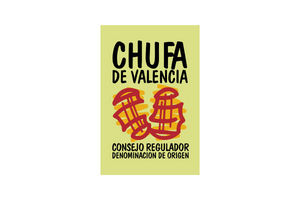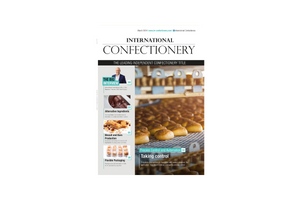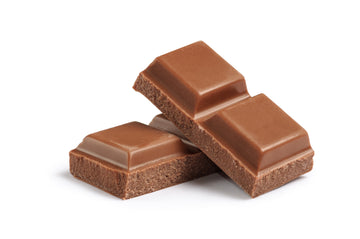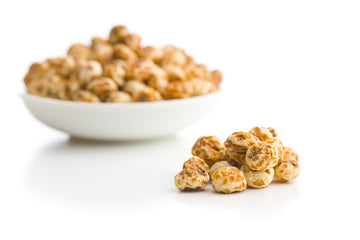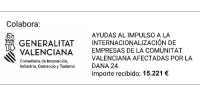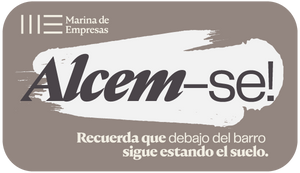The Science, History and Future of Milk Chocolate Crumb
Mar 25, 2025
Background
Milk chocolate, a confection enjoyed globally, owes its widespread appeal to its smooth texture and sweet, comforting flavour. While the final product captures the consumer's attention, a critical intermediate ingredient, milk chocolate crumb, often remains an enigma. This component, particularly significant in the creation of British milk chocolate, contributes uniquely to the taste, texture, and stability of the chocolate. This article aims to explore the multifaceted nature of milk chocolate crumb, delving into its historical origins, the intricate manufacturing processes involved in its creation, the scientific basis for its distinctive flavour, and its potential evolution, especially with the emergence of innovative dairy-free alternatives by Tiger & Bean.
Defining the Essence: What is Milk Chocolate Crumb?
Milk chocolate crumb serves as a foundational element in the production of many high-quality milk chocolates. It is a specialised ingredient, distinct to the chocolate industry, formed through a carefully controlled process. At its core, milk chocolate crumb is a compound ingredient comprising a blend of sugar, milk solids, and cocoa liquor. This mixture undergoes a unique manufacturing process involving vacuum cooking, which allows for the removal of moisture, followed by drying and milling into a powdered form. The proportions of these core ingredients can vary depending on the desired characteristics of the final chocolate product. In some instances, a "white crumb" or "blok milk" can also be produced by omitting the cocoa liquor from the mixture.
The primary purpose of creating milk chocolate crumb is to provide a stable, intermediary product that simplifies the subsequent chocolate manufacturing stages. Fresh milk, with its high water content (approximately 87%), is impractical for direct use in chocolate production as water and cocoa butter, the fat component of chocolate, do not readily mix. The crumb process effectively addresses this by reducing the moisture content significantly, thus preventing the chocolate from seizing and improving its shelf life. Furthermore, the controlled heating during crumb production triggers specific chemical reactions that contribute significantly to the unique flavour profile of the resulting milk chocolate.
Manufacturers recognise that the use of milk chocolate crumb, while potentially more involved than simply using milk powder, often results in a superior quality of milk chocolate, particularly in terms of texture and the development of desirable caramelised flavours. The crumb typically constitutes a substantial portion of the final milk or white chocolate recipe, ranging from about 40% to 80% by weight. The specific manufacturing techniques employed by different producers further enhance the unique qualities of their respective chocolate crumbs, making their flavour difficult to replicate through conventional chocolate processing methods.
A Historical Perspective: The Birth and Rise of Milk Chocolate Crumb
The journey towards creating solid milk chocolate was fraught with challenges, primarily due to the inherent incompatibility of milk's water content with cocoa butter. Early attempts to combine these ingredients often resulted in an unappealing "oily and milky mess". While some early innovations, like Jordan & Timaeus's "steam chocolate" in 1839, hinted at the possibility of solid milk chocolate, these were not widely successful in the long term.
The true breakthrough came in 1875 (or 1876, according to some accounts) with the pioneering work of Swiss chocolatier Daniel Peter. Peter, who had established his chocolate company in 1867, collaborated with his neighbour Henri Nestlé, the inventor of condensed milk. By using condensed milk, Peter successfully overcame the challenge of excess water, creating the first stable form of solid milk chocolate. This innovation involved further dehydrating the condensed milk, essentially laying the groundwork for what would later be formally recognised as the milk chocolate crumb process. His first commercially successful milk chocolate bar, "Gala Peter," debuted in 1887, with "Gala" derived from the Greek word for milk.
The appeal of Peter's milk chocolate, with its milder flavour and smoother texture, was quickly recognised by other Swiss manufacturers, including Cailler and Kohler. These companies adopted and further developed milk chocolate production, contributing to the rapid growth of the Swiss chocolate industry. The lower cocoa content in milk chocolate also made it a more affordable option, further driving its popularity.
The innovation soon spread beyond Switzerland. In the United Kingdom, companies like Cadbury played a significant role in popularising milk chocolate. Cadbury introduced its own line of milk chocolate bars in 1897, culminating in the launch of the highly successful Dairy Milk bar in 1905. Notably, Cadbury established facilities specifically for the production of "chocolate crumb" by 1911. This indicates the formal adoption of the crumb method as a key manufacturing technique in the UK.
Another crucial development that enhanced the quality of milk chocolate was Rodolphe Lindt's invention of conching in 1879. This process of prolonged mixing and agitation refined the texture of chocolate, eliminating the grittiness that characterised some early milk chocolate bars. By the early 20th century, milk chocolate, often produced using the milk chocolate crumb method, had become the dominant form of chocolate enjoyed by consumers worldwide.
The Journey of Transformation: Manufacturing Milk Chocolate Crumb
The production of milk chocolate crumb is a carefully orchestrated process involving several key stages designed to transform raw ingredients into a stable and flavourful intermediate.
The process typically begins with the initial mixing of the primary ingredients: a source of milk (often concentrated milk or sweetened condensed milk is preferred due to their higher solid content), granulated sugar, and cocoa liquor. The specific ratios of these ingredients are crucial and are carefully controlled to achieve the desired characteristics in the final chocolate. While concentrated or sweetened condensed milk are traditional choices, some manufacturers may also utilise reconstituted milk from milk powder.
The heart of the crumb manufacturing process lies in the vacuum cooking and drying stage. The mixture is transferred to a vacuum cooker where it is subjected to reduced pressure (typically between 5 to 20 mm Hg) and controlled temperatures, usually in the range of 80°C to 95°C. This process facilitates the evaporation of moisture, concentrating the solids and, critically, initiating the Maillard reaction, which is responsible for the development of the crumb's unique flavor. The controlled heating during this stage allows for precise manipulation of the flavor profile.
As the mixture dries, crystallisation of the sugar occurs. This phase change, where the mass transitions from a doughy paste to a powder, is vital for the texture and stability of the crumb. Some modern techniques involve "seeding" the mixture with sugar to promote and control this crystallisation process, leading to improved handling properties and reduced processing time.
The resulting dried crumb, often in the form of a cellular cake, is then subjected to milling or grinding. This step reduces the crumb to a fine powder with a specific particle size, typically ranging from 100 to 1000 μm. This fine powder is easier to handle and incorporate into the subsequent stages of chocolate production.
A more recent advancement in crumb manufacturing involves optional compression of the fresh crumb. By compressing the crumb under high pressure (at least 100 kg/cm², and often between 600 to 900 kg/cm²) at controlled temperatures (70°C to 95°C), the crystallisation of amorphous sugar is accelerated. This technique can potentially shorten the overall production time by reducing or eliminating the need for prolonged storage to allow for natural sugar crystallisation.
It is important to note that the specific parameters of each stage, including temperature, pressure, vacuum level, cooking time, and the precise ratios of ingredients, can be carefully adjusted by manufacturers to achieve a wide range of flavour profiles and crumb characteristics. This level of control allows for the creation of signature flavours that distinguish different milk chocolate brands.
The Flavour Alchemist: The Science Behind Crumb's Unique Taste
The distinct flavour that sets milk chocolate made with crumb apart is largely attributed to a complex series of chemical reactions that occur during the crumb manufacturing process, most notably the Maillard reaction. This non-enzymatic browning reaction takes place between amino acids (derived from milk proteins and potentially cocoa) and reducing sugars (such as lactose present in milk) when heat is applied in the presence of moisture.
The Maillard reaction is not a single reaction but rather a cascade of hundreds of different chemical transformations, resulting in the formation of a vast array of flavour compounds. These compounds are responsible for the development of the characteristic cooked, caramelised, nutty, and roasted notes often found in milk chocolate made with crumb. For instance, the reaction can produce compounds that contribute to toffee-like and caramel-like flavours, adding a layer of complexity to the chocolate's overall taste. The intensity and type of flavours generated are highly dependent on the specific processing parameters employed during crumb manufacture, including the temperature and duration of heating, the moisture content of the mixture, and even the presence of cocoa solids. Carefully controlling these factors allows chocolate manufacturers to tailor the flavour profile of their crumb to meet specific consumer preferences.
Beyond the Maillard reaction, other flavour developments can occur during the crumb process. For example, the caramelisation of sugars, which can happen at higher temperatures, can also contribute to the overall flavour profile, imparting sweet and caramel-like notes. Additionally, specific treatments of the milk prior to or during the crumb process can lead to the development of distinct "cowy" or milky flavours. The interplay of these various chemical and physical processes during crumb manufacturing is what ultimately creates the unique and often preferred flavour of milk chocolate made using this intermediary ingredient.
Crumb Versus Powder: A Flavour Showdown
While both milk chocolate crumb and milk powder serve as sources of dairy in milk chocolate, they result in distinctly different flavour profiles in the final product. Milk chocolate made with crumb often exhibits a richer, more complex flavour characterised by cooked, caramelised, and sometimes toffee-like notes. This is a direct consequence of the Maillard reaction taking place during the crumb manufacturing process, where the heating of milk and sugar in the presence of cocoa solids generates a wide array of flavour compounds. This process can lead to a more intense and nuanced flavour experience.
In contrast, milk chocolate made with milk powder, a method more prevalent in Continental Europe, typically presents a flavour that is perceived as fresher, cleaner, and more purely milky. The absence of the controlled heating stage involving sugar and cocoa liquor, as seen in crumb production, means that the Maillard reaction does not develop to the same extent. The milk flavour in these chocolates is often more directly attributable to the inherent taste of the dairy itself, without the added cooked or caramelised nuances.
Beyond flavour, some sources suggest that the use of milk chocolate crumb can also contribute to a better texture in the final chocolate product. This could be related to the specific way the ingredients interact and crystallise during the crumb-making process.
Historically, manufacturers in the UK have shown a preference for the milk chocolate crumb method, valuing the distinctive and often more intense flavour profile it imparts. This preference has contributed to the unique taste associated with British milk chocolate. On the other hand, the use of milk powder might be favoured by other manufacturers for reasons of cost-effectiveness or a desire for a different, perhaps more straightforward, milk chocolate flavour.
The choice between using milk chocolate crumb and milk powder ultimately depends on the desired sensory characteristics of the final milk chocolate. While crumb offers a more complex, cooked, and caramelised flavour, milk powder provides a fresher, more direct milk taste.
|
Feature |
Milk Chocolate (Crumb) |
Milk Chocolate (Milk Powder) |
|
Dominant Flavor |
Cooked, Caramelised, Toffee, Milky Sweetness |
Fresh Milk, Clean, Pure Milk Flavour |
|
Flavor Complexity |
Often More Complex Due to Maillard Reaction |
Potentially Simpler, Direct Milk Flavour |
|
Texture |
Often Perceived as Better |
Can Vary |
|
Association |
Often Linked to British, American and South African Milk Chocolate |
Common in Continental Europe |
Looking Ahead: The Future Landscape of Milk Chocolate Crumb
The milk chocolate industry, while steeped in tradition, continues to evolve, with ongoing trends and innovations influencing the future of ingredients like milk chocolate crumb. One significant area of focus is flavour innovation. Researchers and manufacturers are constantly exploring ways to manipulate the manufacturing process of milk chocolate crumb to achieve even more nuanced and desirable flavour profiles. This includes fine-tuning parameters like temperature, time, and moisture during vacuum cooking to precisely control the Maillard reaction and the resulting flavour compounds. Additionally, there is exploration into the use of specific flavour precursors, such as alpha-dicarbonyls, which can enhance caramel and toffee notes in the crumb. Some manufacturers are also experimenting with treating the milk or cocoa liquor in specific ways before or during crumb production to develop unique flavour characteristics.
Another important consideration for the future is sustainability. Consumers are increasingly conscious of the environmental and ethical impact of their food choices. This growing awareness may drive trends towards more sustainable sourcing of the raw materials used in milk chocolate crumb, including milk and cocoa. This could involve supporting farming practices that minimize environmental impact and ensure fair treatment of producers.
The broader trend towards healthier food options is also likely to influence the future of milk chocolate crumb. As consumers seek products with reduced sugar and fat content, manufacturers may explore modifications to the traditional crumb recipe to align with these preferences. This could involve using alternative sweeteners or adjusting the ratios of milk solids, sugar, and cocoa liquor.
Perhaps one of the most significant trends shaping the future of milk chocolate crumb is the rise of plant-based alternatives. The increasing demand for dairy-free and vegan products has spurred innovation in creating plant-based versions of traditionally dairy-containing ingredients. This is where companies like Tiger & Bean are making notable strides.
A Dairy-Free Revolution: Tiger & Bean's Innovative Approach
At Tiger & Bean we are advancing the development of exceptionally creamy, dairy-free ingredients, including dairy-free milk chocolate crumb. Our plant-based crumb is an alternative to traditional milk chocolate crumb, and can be used for the production of fine flavour, dairy-free alternatives to milk chocolate and white chocolate. Tiger & Bean offer crumb made from plant-based milks such as tiger nut milk, cashew nut milk and sunflower seed milk, which boasts a creamy, milky taste and texture with flavour profiles reminiscent of caramel, malted milk biscuit and buttered toast.
The development of dairy-free milk chocolate crumb and white crumb represents a significant advancement for consumers with lactose intolerance, milk allergies, or those adhering to vegan diets. These innovations have the potential to significantly expand the market for plant-based confectionery by offering products that more closely replicate the taste and texture of traditional milk and white chocolate, something that earlier dairy-free alternatives often struggled to achieve.
Conclusion: Celebrating the Legacy and Future of Milk Chocolate Crumb
Milk chocolate crumb stands as a testament to the ingenuity and dedication within the chocolate manufacturing industry. From its historical origins in Daniel Peter's quest to create a solid milk chocolate to its sophisticated production methods today, crumb has played a vital role in shaping the beloved taste and texture of milk chocolate. The unique flavour profile, largely a result of the Maillard reaction during its creation, distinguishes it from milk chocolate made with milk powder, offering a richer and more complex sensory experience.
As the culinary landscape continues to evolve, the innovation surrounding milk chocolate crumb persists. The emergence of dairy-free alternatives, potentially pioneered by companies like Tiger & Bean using ingredients like tiger nut, signals an exciting future where individuals with dietary restrictions or preferences can enjoy high-quality, plant-based chocolates that closely mimic their traditional counterparts. The ongoing research into flavour manipulation and sustainable practices further underscores the enduring importance and adaptability of this unsung hero of the chocolate world. Understanding the science and innovation behind milk chocolate crumb allows for a deeper appreciation of the complexities involved in creating one of the world's most cherished confections.
Works cited
-
Chocolate crumb flavour manipulation - MyScienceWork, accessed March 25, 2025, https://www.mysciencework.com/patent/show/chocolate-crumb-flavour-manipulation-EP1308094A2
-
US4084011A - Preparation of milk crumb for milk chocolate manufacture - Google Patents, accessed March 25, 2025, https://patents.google.com/patent/US4084011A/en
-
meadowfoods.co.uk, accessed March 25, 2025, https://meadowfoods.co.uk/easter-ingredient-essentials-chocolate-crumb-and-fresh-milk/#:~:text=Chocolate%20crumb%20is%20a%20compound,to%20form%20a%20powdered%20crumb.
-
Easter Ingredient Essentials: Chocolate Crumb and Fresh Milk - Meadow Foods, accessed March 25, 2025, https://meadowfoods.co.uk/easter-ingredient-essentials-chocolate-crumb-and-fresh-milk/
-
A little out of place, but does anyone know what crumb is in chocolate making? - Reddit, accessed March 25, 2025, https://www.reddit.com/r/chocolate/comments/114a5as/a_little_out_of_place_but_does_anyone_know_what/
-
Chocolate crumb - MyScienceWork, accessed March 25, 2025, https://www.mysciencework.com/patent/show/chocolate-crumb-EP0940085A2
-
Milk crumb - Oxford Reference, accessed March 25, 2025, https://www.oxfordreference.com/display/10.1093/oi/authority.20110803100157891
-
Fazer Milk Chocolate Crumb - FazerGroup.com, accessed March 25, 2025, https://www.fazergroup.com/our-businesses/our-b2b-businesses/industrial-exports/fazer-milk-chocolate-crumb/
-
Milk chocolate - Wikipedia, accessed March 25, 2025, https://en.wikipedia.org/wiki/Milk_chocolate
-
Who Invented Milk Chocolate?, accessed March 25, 2025, https://www.whitakerschocolates.com/blogs/blog/who-invented-milk-chocolate
-
History Of Milk Chocolate, accessed March 25, 2025, https://www.chocolate.co.uk/blogs/news/history-of-milk-chocolate
-
Peter's Chocolate - Wikipedia, accessed March 25, 2025, https://en.wikipedia.org/wiki/Peter%27s_Chocolate
-
Our Story - Peter's Chocolate, accessed March 25, 2025, https://peterschocolate.com/our-story/
-
Cadbury - Wikipedia, accessed March 25, 2025, https://en.wikipedia.org/wiki/Cadbury
-
Cadbury Chocolate Factory - Engineering Heritage Australia, accessed March 25, 2025, https://heritage.engineersaustralia.org.au/wiki/Place:Cadbury_Chocolate_Factory
-
EP2393379A1 - Process for preparing chocolate crumb - Google Patents, accessed March 25, 2025, https://patents.google.com/patent/EP2393379A1/en
-
Milk Chocolate - Science | HowStuffWorks, accessed March 25, 2025, https://science.howstuffworks.com/innovation/edible-innovations/how-chocolate-is-made7.htm
-
Ever Wondered How Cadbury Dairy Chocolate Is Made?! Join us on this FanTECHstic Factory Tour! - YouTube, accessed March 25, 2025, https://www.youtube.com/watch?v=sgkyZLb8Cls
-
Method of preparation of chocolate crumb - TREA, accessed March 25, 2025, https://trea.com/information/method-of-preparation-of-chocolate-crumb/patentgrant/6e07cce5-a29e-461a-8c31-d69c4ba8f89a
-
OUR PROCESS FOR MAKING TRUE MILK CHOCOLATE IS REMARKABLY COMPLEX. NO WONDER IT TASTES THAT WAY. - Cargill, accessed March 25, 2025, https://www.cargill.com/doc/1432220495678/milk-chocolate-crumb-product-line.pdf
-
Chocolate crumb - ResearchGate, accessed March 25, 2025, https://www.researchgate.net/publication/314295863_Chocolate_crumb
-
EP2389815A1 - Milk and chocolate crumb having enhanced caramel flavor - Google Patents, accessed March 25, 2025, https://patents.google.com/patent/EP2389815A1/en
-
2000 The Flavor of Milk Chocolate Changes Caused by Processing, accessed March 25, 2025, https://www.blommer.com/_documents/flavor-changes-caused-by-processing-article.pdf
-
Chapter 1 - TRADITIONAL CHOCOLATE MAKING - SciSpace, accessed March 25, 2025, https://scispace.com/pdf/traditional-chocolate-making-4eqkx5ut5a.pdf



